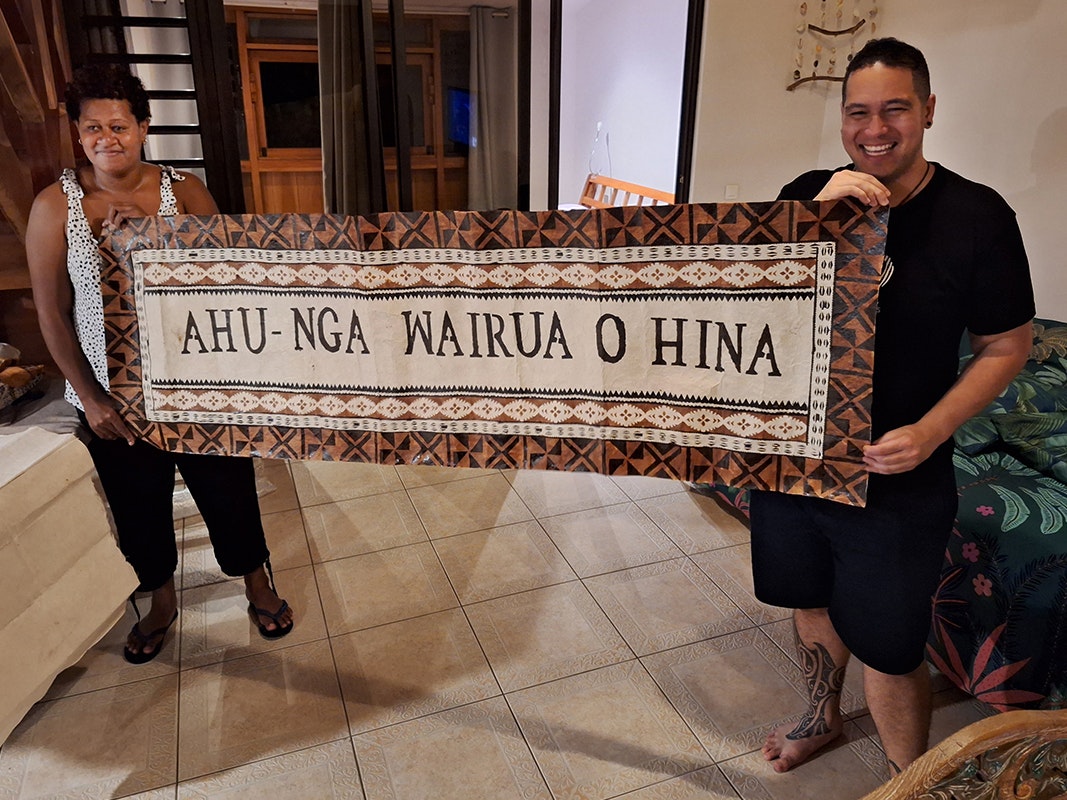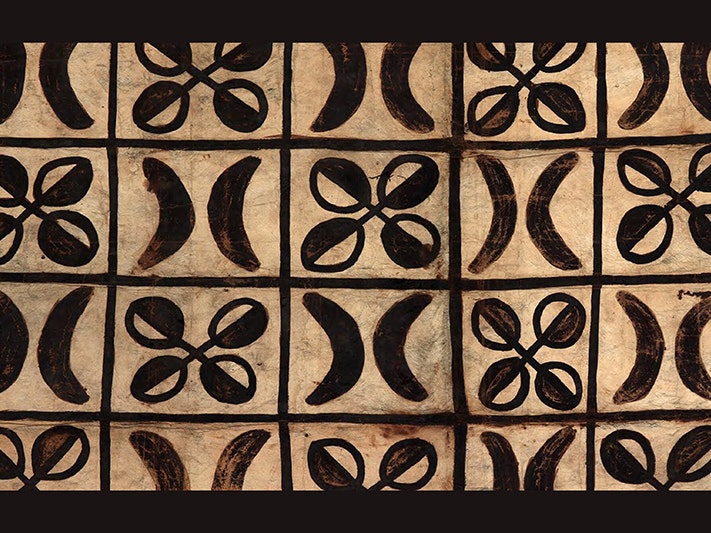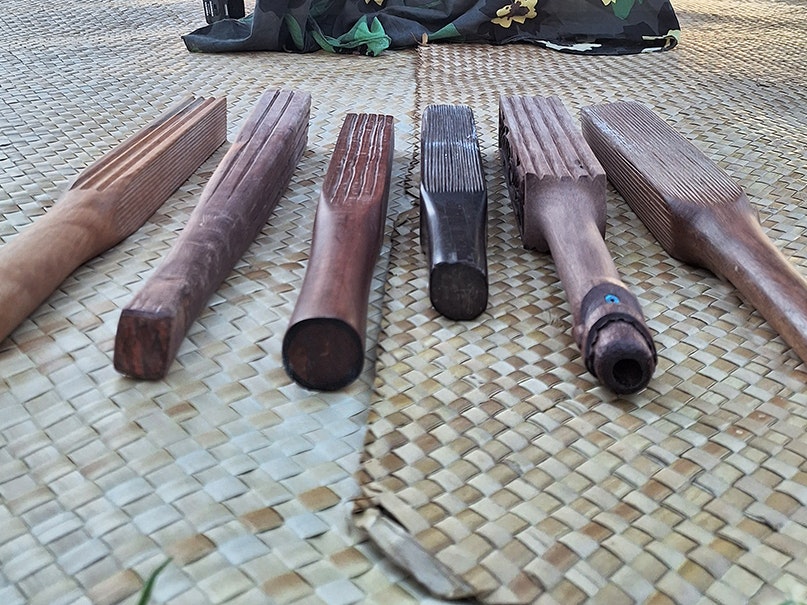When Nikau Hindin first started making aute, she wanted to focus on the cloth and learning how to make it, and respecting the tupu it came from, spending about five years making aute the way her tūpuna made it.
Nikau continues to connect to her tūpuna and access mātauranga Māori, while also contributing to the visual language that is defining Māori aute and what it represents. This allows her to engage with her community in meaningful ways and give back to the whakapapa of toi Māori.
Watch Nikau Hindin talking about her Māori aute practice and what it means to her at the 2023 ‘Ahu: Ngā Wairua o Hina in Tahiti.
‘Ahu: Ngā Wairua o Hina
In 2021, Te Papa acquired a rare book containing tapacloth samples, cut from larger pieces collected during Captain Cook’s Pacific voyages in 1768, 1772, and 1776, and compiled by Alexander Shaw in 1787. The samples represent tapa-making practices from various islands including Hawai‘i, Tahiti and Tonga.
In 2023, in Tahiti, ‘Ahu: Ngā Wairua o Hina gathered tapa makers of Tongan, Sāmoan, Niuean, Fijian, Hawaiian, Tahitian, Pitcairn-Norfolk Island, and Māori descent for five days to learn about and re-establish their living relationships to the cloth held within Alexander Shaw’s book.
Through a process of wānanga this group of makers created two tapa bundles, incorporating the ideas of past, present, and future – one of the bundles is with Te Papa and the other with Te Fare Iamanaha-Musée de Tahiti et des Îles.


